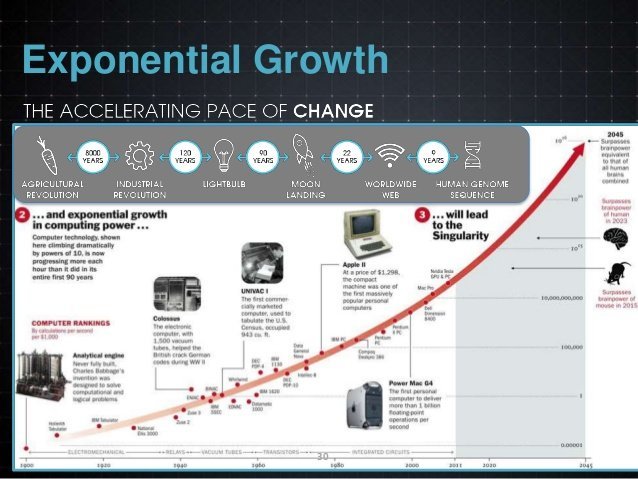The potential risks and dangers of Singularity and Immortality are a growing concern among experts in the field. As we approach the technological singularity, where machines surpass human intelligence, the implications of AI and its role in Singularity become more apparent.
Singularity is the moment in time when artificial intelligence and other technologies have become so advanced that humanity undergoes a dramatic and irreversible change. When all the advances in technology, particularly in artificial intelligence (AI), will lead to machines that are smarter than human beings.
The idea of immortality in the age of Singularity and AI raises ethical and philosophical questions, as well as practical implications for society. The potential implications of Singularity and Immortality include the possibility of limitless knowledge and power, yet also the risk of losing control over such advancements.
Ray Kurzweil, computer scientist, and former Google engineer, has predicted that humans will achieve immortality in just seven years. Kurzeil is well known for his predictions and of his 147 predictions since the 1990s, Kurzweil claims an 86 percent accuracy rate
Among Kurzweil’s many honors, he received the 2015 Technical Grammy Award for outstanding achievements in the field of music technology; he is the recipient of the National Medal of Technology, was inducted into the National Inventors Hall of Fame, holds twenty-one honorary Doctorates, and honors from three U.S. presidents.
Ray has written five national best-selling books, including New York Times best sellers The Singularity Is Near (2005) and How To Create A Mind (2012). He is Co-Founder and Chancellor of Singularity University and a Director of Engineering at Google heading up a team developing machine intelligence and natural language understanding.
In a communication to Futurism in 2017, Kurzweil states:
2029 is the consistent date I have predicted for when an AI will pass a valid Turing test and therefore achieve human levels of intelligence. I have set the date 2045 for the 'Singularity' which is when we will multiply our effective intelligence a billion fold by merging with the intelligence we have created.
“By 2029, computers will have human-level intelligence,” Kurzweil said in an interview with SXSW.
The 75-year-old computer scientist and former Google engineer, who received the National Medal of Technology in 1999 and was inducted into the National Inventors Hall of Fame in 2002, made this shocking prediction — and many others — in recent decades.
Now, as the fated date approaches, Kurzweil’s comments on immortality have resurfaced in a YouTube series by tech vlogger Adagio. two–part
Kurzweil has accurately prophesied technological achievements in the past — including the widespread use of laptops and an IBM computer’s win over the world chess champion Garry Kasparov — inspiring a cult following among other future-thinkers.
Adagio’s new videos, which have collectively racked up 87,000 plus views, revisits claims that Kurzweil made in this 2005 book, “The Singularity Is Near,” in which he predicted that technology will allow humans achieve to everlasting life by 2030.
“2029 is the consistent date I have predicted for when an AI will pass a valid [Alan] Turing test,” Kurzweil told Futurism in 2017 — referring to experiments that challenge computers to think like us — “and therefore achieve human levels of intelligence.”
So is immortality or Singularity a good or bad thing? Depends on who you ask.
“What’s actually happening is [machines] are powering all of us,” Kurzweil said during the SXSW interview. "They’re making us smarter. They may not yet be inside our bodies, but, by the 2030s, we will connect our neocortex, the part of our brain where we do our thinking, to the cloud.”
This idea is similar to Musk's controversial neural lace and to XPRIZE Foundation chairman Peter Diamandis' "meta-intelligence" concept. But unlike Kurweil, Musk has been sounding the alarm when it comes to the danger of AI technology whereas Kurzweil believes this technology could improve human lives.
“We’re going to get more neocortex, we’re going to be funnier, we’re going to be better at music. We’re going to be sexier,” Kurzweil said during the SXSW interview. "We’re really going to exemplify all the things that we value in humans to a greater degree.”
AI may not be the only path towards immortality in fact advances in nanotechnology and biotechnology are also potential pathways towards the Singularity.
According to Interesting Engineering, another anticipated pathway is the ability to manipulate matter at increasingly smaller scales. Eventually, this would allow humans to engineer materials at the atomic or even quantum level, leading to a new era in fabrication and medicine. Such technologies fall under the general heading of "nanotechnology" and describe machines that measure a few nanometers (10-9 m) in scale.
Theoretical physicist Richard Feynman first described the concept in his 1959 Caltech lecture, “There’s Plenty of Room at the Bottom.” Borrowing from John von Neumann’s concept of “Universal Assemblers” (aka. von Neumann probes), he spoke of machines that would be capable of endlessly reproducing themselves, but on smaller and smaller scales.
This concept was elaborated on further by K. Eric Drexler, an engineer who studied under Marvin Minsky — a cognitive and computer scientist considered one of the "fathers of AI."
Drexler released his book in 1986 titled, Engines of Creation: The Coming Era of Nanotechnology. Drexler described "molecular nanotechnology" and "molecular manufacturing."
In the first chapter of the book, Drexler provides a straightforward description of how rearranging atoms can allow for multiple possibilities:
"COAL AND DIAMONDS, sand and computer chips, cancer and healthy tissue: throughout history, variations in the arrangement of atoms have distinguished the cheap from the cherished, the diseased from the healthy. Arranged one way, atoms make up soil, air, and water; arranged another, they make up ripe strawberries. Arranged one way, they make up homes and fresh air; arranged another, they make up ash and smoke."
If Drexler and others are right about the future of nanotechnology, then we should be able to replicate anything in existence, including replacing aging cells that lead to the death of the human body. Think about it, the possibilities are endless.
Scientists in Australia have developed a small flexible robot that could 3D print biomaterials directly inside the human body to repair damaged organs, tissues, and blood vessels.
This could be a game-changer as the current process of creating biomaterials outside the body and then relying on surgery to insert them can lead to high blood loss and infections.
"Currently, no commercially available technology can perform direct 3D printing inside the human body," said Dr Thanh Nho Do, Director of the University of New South Wales Medical Robotics Lab.
Only 11-13mm wide and made of soft materials such as silicone elastomer, the robot is small enough to be inserted into the mouth or the anus - like an endoscopic tool - which would reduce the need for invasive surgery, he said. The research team is working on creating an even smaller product.
The experimental device, named F3DB, prints tissue-like structures using “bio-ink” and living cells which then fuse naturally with the human body.
The mini 3D printer features a three-axis printing head that can bend and twist using hydraulics on the tip of a soft robotic arm.
It can print pre-programmed shapes or can be operated manually.
Researchers say the F3DB can be used in hard-to-reach areas of the body such as the colon, stomach, heart and bladder, which cannot be done with current surgical devices.
In addition, according to the researchers, the 3D bioprinter could remove certain cancers, including colon cancer, using the endoscopic submucosal dissection process. The latter is a technique that consists in removing a part of an organ or tissue affected by cancerous lesions. In this case, the operator uses a water jet to clean the cancerous surface.
The research team believes that F3DB is on track for commercialization in the next five to seven years, pending further clinical trials.
The Future
What makes the future of technological advances somewhat predictable and why does it seem like the more we advance, the faster we accelerate towards living in one of Hollywood's box office sci-fi movie smash hit?
It seems that way because it is happening. The phenomenon is due to something called Moore's Law and the "Law of Accelerating Returns."
Moore's law is a term used to refer to the observation made by the late Gordon Moore in 1965 that the number of transistors in a dense integrated circuit (IC) doubles about every two years. With each advance made.
Gordon Moore, the co-founder of Intel Corp, predicted in 1965 that the number of transistors on a computer chip would double every two years for the foreseeable future.
According to the law of accelerating returns, the pace of technological progress—especially information technology—speeds up exponentially over time because of the positive feedback loop of the evolution and improvement of the processes.
Think in terms of rabbits in an 8x10 room. If you start with two rabbits and they have four babies, those four babies will in turn create eight babies and so on at a predictable rate. The more babies that are made, the faster the 8x10 room will become filled with rabbits. If the number of rabbits did not double each birth cycle, the timeframe would be drastically shorter.

Currently, your life expectancy is actually moving away from you whether you know it or not.
The life expectancy of someone who is 90 today isn't the same as the life expectancy that you'll have when you're 90. Why? Because of the law of accelerating returns. If medical advances, technology and nanotechnology continue accelerating, then the same would be true for your life expectancy.
So far it's been a matter of months gained for every year, but we'll soon be at a point where for every year you live, a year of life expectancy will be added. This will be a turning point, as medical technologies allow people to survive long enough to receive even better medical treatments and technologies.
The Singularity is reached when the law of accelerating returns is no longer applicable. In fact, Kurzweil believes this will be a dramatic change, in humankind, making predictions beyond that point impossible because technological growth will become uncontrollable and irreversible, resulting in unforeseeable changes to human civilization
Some of the advances that are predicted for our very near future and in my lifetime include the following:
By the 2020s, most diseases will go away as nanobots become smarter than current medical technology. Normal human eating can be replaced by nanosystems. The Turing test begins to be passable by 2029. Self-driving cars begin to take over the roads, and people won’t be allowed to drive on highways.
By the 2030s, virtual reality will begin to feel 100% real. We will be able to upload our mind/consciousness by the end of the decade.
By the 2040s, non-biological intelligence will be a billion times more capable than biological intelligence (a.k.a. us). Nanotech foglets will be able to make food out of thin air and create any object in physical world at a whim.
By 2045, we will multiply our intelligence a billionfold by linking wirelessly from our neocortex to a synthetic neocortex in the cloud.
The challenges and risks associated with Singularity and Immortality are not to be taken lightly, as they could potentially have long-lasting consequences for both humanity and the world at large. It is important for researchers and developers to approach these technologies with caution and understand the potential risks involved. However, the benefits of these advancements cannot be ignored and must be carefully balanced with their potential risks.
So, are you ready to become immortal?


















